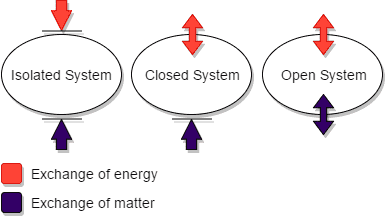5 Nuclear Waste Disposal Methods Explained
Nuclear waste disposal methods are; geological disposal, reprocessing, transmutation, dilution and dispersal.
It must be noted that this is different from nuclear waste treatment and conditioning, which utilize methods like incineration, vitrification, compaction, ion exchange, and ultrafiltration.
This article discusses nuclear waste disposal methods, as outlined below;
1).Geological Disposal (as one of the Nuclear Waste Disposal Methods)
The concept of geological disposal refers to all ideologies, techniques, tools and practices that involve the isolation of hazardous waste from the environment by burial in subsurface soil and rock formations at significant depth. It is also alternatively called deep geologic disposal or geologic burial.
Deep geological disposal of nuclear waste is safe, because it effectively isolates the waste materials from all essential biotic and abiotic components of the ecosystem, thereby preventing them from emitting harmful radiation or having any significant environmental impact.
Of all nuclear waste disposal methods, geological disposal is the most common and most-widely recommended [1].
The geologic formations in which nuclear waste is buried are also called geological repositories, or deep geological repositories (DGRs).
A geological repository is an underground storage system in inert, low-permeability rocks and/or soil, and which occurs at significant depth (between 200 and 1,000 meters on average).
Advantages of geological disposal of nuclear waste include its effectiveness, safety, relative simplicity, and the fact that it is suitable as a means of long-term or permanent disposal.
Countries that have the largest geological repositories for nuclear waste include Germany, where subsurface isolation of radioactive materials has been practiced for several years so far.
Other important steps in nuclear waste management must be observed before radioactive materials become suitable for geological disposal. These steps include pretreatment, treatment, and conditioning.

2). Space Disposal
It is possible to dispose of waste in space by transporting the waste as cargo on spacecrafts, and dumping it in any suitable extraterrestrial location.
The concept of space disposal of nuclear waste poses prospects of effective isolation from the Earth and its biomes.
Specially-designed spacecrafts and launch systems can be developed for this purpose, and extraterrestrial mapping can help in finding the best areas where disposal is possible.
Some hypotheses even propose that waste can be effectively disposed of by launching it into the Sun.
In spite of the positive prospects of space disposal, it is riddled with technical challenges, as well as the cost and complexity of space exploration, so that the feasibility of using this method on a regular basis in real-life scenarios, is low [5].
3). Reprocessing (as one of the Nuclear Waste Disposal Methods)
Nuclear waste reprocessing is the physical and chemical of radioactive waste into different groups for the purpose of recovering reusable materials.
Also known as radioactive waste recycling, the method is commonly applied as a means on conserving fuel in nuclear power plants.
Nuclear waste can be reused for as many times as it still contains significant amount of nuclear energy which can be extracted and used. In real-life scenarios, this is often not more than three times, but may be up to five times in cases involving high-grade nuclear fuel.
In nuclear waste reprocessing, fission products are usually separated as waste, while reusable fissile nuclear materials are kept for reuse. The fission products are often subsequently conditioned by vitrification, to make them suitable for geologic disposal..
The discussion so far already indicates that reprocessing does not necessarily involve actual disposal. However, it is categorized as a nuclear waste disposal method due to its prominence as a measure that facilitates the disposal process, as well as energy conservation.
4). Transmutation
Nuclear transmutation is a method used to reduce the half-life of radioactive materials and speed-up their decay through artificial irradiation using neutron streams.
The method is very helpful when dealing with nuclear waste materials that have a significant proportion (greater than 50%) of very long-lived radioisotopes [4].
Transmutation is often described using the compound term; partitioning and transmutation (P & T), to refer to the splitting effect of controlled neutron bombardment and how this helps reduce radioactive half-life.
Nuclear transmutation is sometimes referred to as an 'upscaling' approach, and can be used in nuclear power plants to improve safety, sustainability and energy efficiency of the power generation process [3].
5). Dilution and Dispersal (as one of the Nuclear Waste Disposal Methods)
Dilution and dispersal is a bi-dimensional nuclear waste disposal method that is most effective for liquid waste and/or low-level waste.
The method is based on what is known as 'dilute and disperse' principle, which proposes deliberate de-concentration as a viable nuclear waste management strategy and a means to protect the ecosystem from harmful radiation-related environmental impacts.
As earlier stated, dilution and dispersion is best for low-level liquid radioactive waste. Its aim is to dispose of such waste in such a manner that they become highly dispersed and have very low concentration per unit area. Achieving this will lead to such low concentrations as may be non-harmful and acceptable according to environmental standards.
Because it does nor involve isolation of waste, the dilution and dispersal method can be problematic, and poses risks to the environment when carried out with any error at all.
In the light of this, it is important to note that the method is not currently popular, as it was used mostly in the mid-twentieth century, in the absence of more advanced methods [2].
Conclusion
Nuclear waste disposal methods are;
1.Geological Disposal
2. Space Disposal
3. Reprocessing
4. Transmutation
5. Dilution and Dispersal
References
1). Apted, M. J.; Ahn, J. (2017). "Geological Repository Systems for Safe Disposal of Spent Nuclear Fuels and Radioactive Waste." A volume in Woodhead Publishing Series in Energy, Second Edition. Available at: https://www.sciencedirect.com/book/9780081006429/geological-repository-systems-for-safe-disposal-of-spent-nuclear-fuels-and-radioactive-waste. (Accessed 5 February 2023).
2). Fagon, L. (2022). "Dilution or containment: controlling radioactive liquid effluents from the 1950s to the 1980s on Marcoule plant, France." Material approaches to the handling of threats in the modern world. 3rd International Conference of the Quarantine Studies Network (QSN). Available at: https://www.shs-conferences.org/articles/shsconf/abs/2022/06/shsconf_moc2022_01004/shsconf_moc2022_01004.html. (Accessed 5 February 2023).
3). INTERNATIONAL ATOMIC ENERGY AGENCY (2004). "Implications of Partitioning and Transmutation in Radioactive Waste Management." Technical Reports Series No. 435, IAEA, Vienna (2004). Available at: https://www.iaea.org/publications/7112/implications-of-partitioning-and-transmutation-in-radioactive-waste-management. (Accessed 5 February 2023).
4). Mueller, A. C. (2012). "Transmutation of Nuclear Waste and the future MYRRHA Demonstrator." Journal of Physics Conference Series 420(1). Available at: https://doi.org/10.1088/1742-6596/420/1/012059. (Accessed 5 February 2023).
5). Siegel, E. (2019). "This Is Why We Don't Shoot Earth's Garbage Into The Sun." Available at: https://www.forbes.com/sites/startswithabang/2019/09/20/this-is-why-we-dont-shoot-earths-garbage-into-the-sun/?sh=224d89525d63. (Accessed 5 February 2023).



